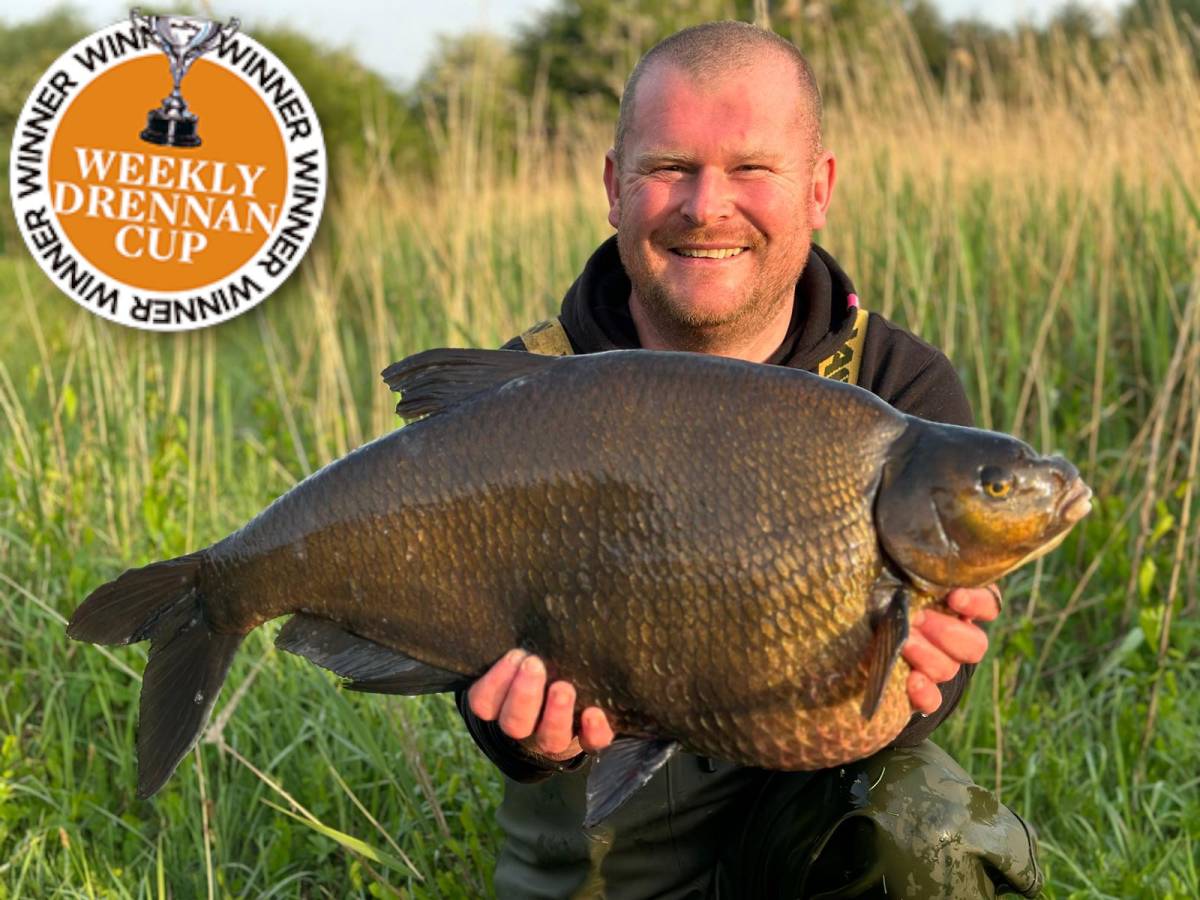
Recently I had my first proper trip on a midlands gravel pit that’s famously very hard. I knew that, if a fish took my hookbait, I wanted to connect with it. For me, a method feeder gives a great chance of that happening and, at 6:15am on the third morning of the trip, I hooked and landed this phenomenal 18lb 14oz bream. It was a special moment when it went in the net!
I was targeting a spot 70 yards out where there was a slight plateau, here the water shallowed slightly from 9ft to 8ft. There was a bit of light weed growth and I know that’d put some people off, but I don’t mind it at all, so long as it’s not too dense. Fish like to feed over the stuff, so I have confidence in placing my rig amongst it. But it is crucial to fine-tune your rig to do so effectively, and there are a few tweaks I make to the standard method feeder approach.
My hookbait was a worm kebab, which I don’t tuck into the micro pellets that I mould around the feeder. Instead, I leave it hanging free and hook on a nugget of PVA foam. When I cast out and the rig hits bottom, my hookbait will float above the feeder until the foam dissolves and it falls down gently, landing on top of any bottom detritus. The nugget of foam also ensures that my four-inch braided hooklink lies in a tight line to the feeder, aided by a small sinker I add. Having minimal slack between the feeder and hookbait boosts the rig’s bolt-effect. Every cast, I have faith in my hookbait being presented well.
Over the top of this spot, I fed a mixture of chopped worms, casters and pellets, and I got through a fair bit of bait over the trip, with five pints of casters and two-and-a-half bags of pellets going in. I’d recast my feeders around four times a day: at first light, lunchtime, the afternoon, and before dark, ensuring I had fresh hookbaits at prime-bite times.”
Well done Matthew!
